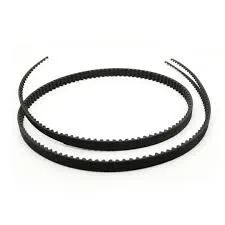- Arabic
- French
- Russian
- Spanish
- Portuguese
- Turkish
- Armenian
- English
- Albanian
- Amharic
- Azerbaijani
- Basque
- Belarusian
- Bengali
- Bosnian
- Bulgarian
- Catalan
- Cebuano
- Corsican
- Croatian
- Czech
- Danish
- Dutch
- Afrikaans
- Esperanto
- Estonian
- Finnish
- Frisian
- Galician
- Georgian
- German
- Greek
- Gujarati
- Haitian Creole
- hausa
- hawaiian
- Hebrew
- Hindi
- Miao
- Hungarian
- Icelandic
- igbo
- Indonesian
- irish
- Italian
- Japanese
- Javanese
- Kannada
- kazakh
- Khmer
- Rwandese
- Korean
- Kurdish
- Kyrgyz
- Lao
- Latin
- Latvian
- Lithuanian
- Luxembourgish
- Macedonian
- Malgashi
- Malay
- Malayalam
- Maltese
- Maori
- Marathi
- Mongolian
- Myanmar
- Nepali
- Norwegian
- Norwegian
- Occitan
- Pashto
- Persian
- Polish
- Punjabi
- Romanian
- Samoan
- Scottish Gaelic
- Serbian
- Sesotho
- Shona
- Sindhi
- Sinhala
- Slovak
- Slovenian
- Somali
- Sundanese
- Swahili
- Swedish
- Tagalog
- Tajik
- Tamil
- Tatar
- Telugu
- Thai
- Turkmen
- Ukrainian
- Urdu
- Uighur
- Uzbek
- Vietnamese
- Welsh
- Bantu
- Yiddish
- Yoruba
- Zulu
נוב . 19, 2024 13:31 Back to list
Dual-sided Timing Belts with Teeth for Enhanced Performance and Durability
Double-Sided Teeth Timing Belts A Comprehensive Overview
Timing belts are essential components in various mechanical systems, particularly in automotive and industrial applications. Among the different types available, the double-sided teeth timing belt stands out for its unique design and versatility. This article delves into what double-sided teeth timing belts are, their advantages, applications, and key considerations for their use.
What is a Double-Sided Teeth Timing Belt?
A double-sided teeth timing belt features teeth on both sides of the belt, allowing it to be driven by sprockets attached to either side. Typically made from durable materials such as rubber or polyurethane, this belt is reinforced with fiber to withstand high tension and abrasive conditions. The teeth ensure precise meshing with the sprockets, enabling accurate timing and synchronization of rotating components.
Advantages of Double-Sided Teeth Timing Belts
1. Versatility One of the most significant benefits of double-sided timing belts is their flexibility in application. They can be used in various configurations, allowing for dual-directional drives. This feature makes them ideal for systems where space is limited or where two shafts need to be driven simultaneously.
2. Space Efficiency These belts enable compact designs since they eliminate the need for additional components like pulleys or tensioners, which would otherwise be necessary to achieve similar functionality with single-sided belts. This space-saving attribute is particularly advantageous in tight installations.
3. Reduced Wear and Tear The use of double-sided teeth ensures that wear is evenly distributed across the belt. This design minimizes stress concentrations and prolongs the life of the timing belt, making it a cost-effective solution in the long run.
4. Enhanced Performance The timing belt's precision in movement leads to minimized slippage and improved performance, particularly in high-speed applications. This ensures that machinery operates smoothly and without interruption, which is vital in industries with strict operational standards.
5. Noise Reduction Unlike chain-driven systems, timing belts offer quieter operation, significantly reducing noise pollution in industrial settings. This feature is increasingly important as companies strive to create more comfortable working environments.
Applications of Double-Sided Teeth Timing Belts
double sided teeth timing belt

The versatility of double-sided teeth timing belts allows them to be employed in a wide range of applications
- Automotive Used in engine timing systems and camshaft drives, these belts ensure the synchronization of critical engine components, contributing to efficient engine performance. - Industrial Machinery Commonly found in conveyor systems, packaging machines, and robotic arms, double-sided timing belts facilitate the precise movement required in various manufacturing processes.
- Printing Equipment In printers and scanners, these belts maintain accurate positioning, ensuring clarity and precision in printed materials.
- Textile and Fiber Machinery The belts are employed to drive looms and other machinery, where durability and precision are vital for product quality.
Key Considerations
While double-sided teeth timing belts offer numerous advantages, several factors must be considered when selecting and implementing them
1. Load Capacity Assessing the load the belt will need to carry is crucial for selecting the appropriate type of timing belt. Ensure the chosen belt can handle the required tension and application demands.
2. Environmental Factors Consider the operating environment, including temperature, moisture, and exposure to chemicals. Some materials may not withstand certain conditions, leading to premature failure.
3. Maintenance Although timing belts generally require less maintenance than chain systems, periodic inspections are still necessary. Look for signs of wear, such as fraying or misalignment, to ensure optimal performance.
4. Installation Proper installation is key to the effective operation of double-sided timing belts. Ensure alignment with sprockets is correct to avoid excessive wear or slippage.
In conclusion, double-sided teeth timing belts provide significant benefits across various applications, thanks to their versatility, space efficiency, and durability. Understanding their advantages and key considerations allows for informed decisions in selecting the right type for specific needs, ultimately enhancing machinery performance and longevity. Whether in automotive or industrial settings, these belts remain a reliable choice for precision and efficiency.
-
Buy Serpentine Belt Online – Affordable Prices & Durable Quality
NewsJul.26,2025
-
High-Performance Metric Variable Speed Belts for Industrial Use
NewsJul.25,2025
-
High-Quality Endless Flat Drive Belt for Precision Power Transmission
NewsJul.24,2025
-
High-Performance Serpentine Belt for Car Engines – Durable & Reliable
NewsJul.23,2025
-
High Efficiency V Belt Drive with Double & Toothed Options for Industry
NewsJul.22,2025
-
Affordable Fan Belt Cost - Compare Prices & Save | Auto Parts Deals
NewsJul.22,2025

